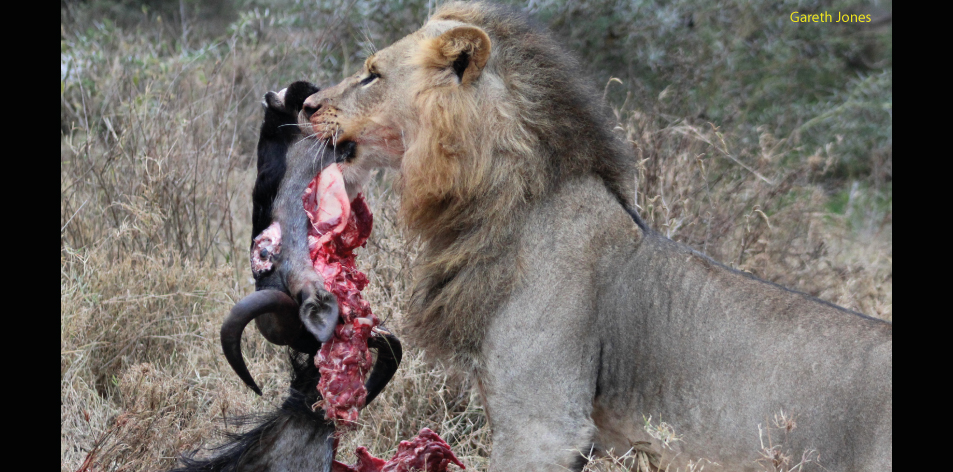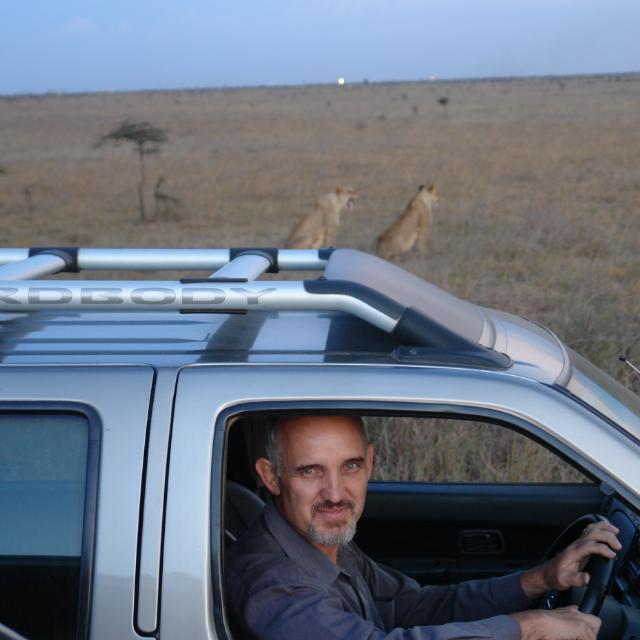
From Cub To King!!!- Article by Gareth Jones
Cubs To Kings
Lion cubs are indeed very cute creatures and sightings are immensely enjoyable by those who see them in the wild. However, while there are playful and joyful moments, being part of the cub in any part of wild Africa is often very sad for many cubs, as this article will highlight. Indeed these young cats are only cubs for a relatively short time, as graduation to adulthood is the privilege for few lion cubs.
Over a period of more than 50 years, I have been privileged to have seen much of Africa (17 countries in total). While there have been many beautiful places, there has also been a reason to be sad, very sad. For example, it is a very sobering moment to find a dead lion cub in the wild. Especially when considering the enormous pressure that lions live under in the current reality of Africa. In Kenya, and particularly heavily populated areas around Nairobi, the survival of Lions to adulthood is very difficult and almost a miracle in some cases. I clearly remember a very low moment of time in the history of the lions of the Nairobi National Park, by 2003 only as estimated 6, maybe 7 lions remained in the park. This tragically low number was due to human – wildlife conflict, when lions had been killing livestock outside the park. Sadly. the community decided to hunt the lions in revenge for their losses with devastating results.
Over close to 20 years, the lion population gradually increased, first into double figures, then above twenty, then later into the thirties, and has rarely touched 40. Apart from the everyday difficulties of being a wild lion, the Kenya Wildlife Service has been involved in minimizing the possibilities of lion incidents by having regular community discussions. Mostly assisted by organisations like the Friends of the Nairobi National Park (FoNNaP), The Wildlife Fund (TWF),Wildlife Direct and the Conservation Alliance have been committed to reach out to community members with vulnerable livestock bomas situated predominantly near the southern boundary of the park. This assistance has mostly been by donating funds given by caring people to FoNNaP and TWF and then installing many special lion deterrent systems known locally as “lion lights”. This innovative technology uses motion sensors to trigger a flashing LED light circuit when there is movement in the range of the motion sensors.
The moment a male lion cub is born, the constant battle to mature from cub to king starts. Initially, the lioness does normally hide the cubs for about 6 weeks, while they are still virtually blind and weak. Then there are so many threats to overcome for these little cubs on a daily basis. Anything from older sibling bullying to being killed by another dominant mature lion, or even hyenas, possibly buffaloes and sometimes snakes and the most dangerous creature of all, mankind!!!
Lionesses can give birth to 4 cubs on rare occasions, however, 2-3 cubs are more common. All wild lion cubs are born in hidden places. When it is the right time, a lioness leaves her pride to search for a hidden den where she can give birth in secrecy so that the newborn cubs increase their chance of survival. The cubs are born blind and their eyes only open after 2-3 weeks, and then it takes another few weeks for them to be able to see clearly and focus. The newborn cubs also have black spots on their bodies that tend to fade as they grow older. The lioness keeps predators, such as large birds, snakes, hyenas, leopards, even male lions away from her newborns. The newborn cubs tend to crawl around when tiny, and cannot walk for the first 3 weeks of their lives. After about 6 weeks the lioness introduces the cubs to the trusted pride members. Baby cubs like to explore and socialize by playing. For those who are able to see lion cubs in the wild, it is wonderful to watch cubs playfully showcase their cute actions.
If older lion cubs are present in a family pride, a lioness does not introduce her newborns until little ones turn 3 months old. This is because older cubs usually bully the little ones by playing rough and stealing their milk. Like humans, lion cubs are born without teeth. So, their mother’s milk is crucial for them to grow up. They stop drinking milk when they reach an age of 6-7 months. However, they still stay dependent on their mother for protection and meat. Lion cubs usually only start eating meat after about 3 months. At about 2 years of age lions have learnt hunting skills, and therefore become less dependent upon an adult care. As a consequence of being over 2 years old male cubs are then ousted from their maternal pride.
Sadly only 1 in 8 (about 12%) of male lion cubs survive in the wild. Even though male and female lion cubs are born roughly the same number ratios. Life in the “Royal Cub Club” is much tougher for male cubs, especially after they are ousted from their maternal pride. Thereafter, young male cubs need to endure a “survival of the fittest”, “do or die” test period of their lives. During that rough journey, they experience deadly fights with males in foreign territories.
If the dominant male lions of a pride lose their authority to a newcomer male, they put lion cubs of the pride in a deadly risk situation, because a new leader kills all the existing lion cubs. This is one of the saddest facts about lion cubs. In order to successfully reach 2 years of age, lion cubs go through very tough times. Most of the time, they become victims of starvation, abandonment, and predators, which seriously reduces their chances of living a mature life. Lions in the wild rarely live longer than 12 years and 15 years is exceptional.
The transition from cute cub to big cat carnivore, depends on the survival of the fittest. So, effectively while us humans mostly see the softer side of “Royal Cub Club”, in reality it is a very tough cub club to be in, and graduating to adulthood is the privilege of the select few, who then pass their stronger genes onto the next generation.
Lion populations in Africa have plummeted drastically in recent years, from well over 200,000 a hundred years ago, to less than 20,000 currently alive. Lions are no longer even found in the wild in at least 26 African countries, sadly there are just a few African countries like South Africa, Namibia, Botswana, Zambia, Tanzania, Uganda and Kenya that continue to protect critically endangered and threatened species, and lions are seriously in danger of being in the that category. We hope and pray that in the future more “cub to king” successful survival stories will be told, as those humans who really care continue to work together to protect them. Long live the Nairobi National Park lion Kings.


